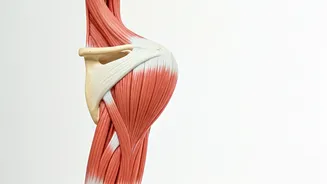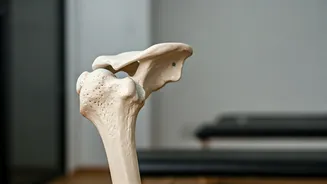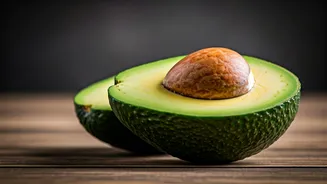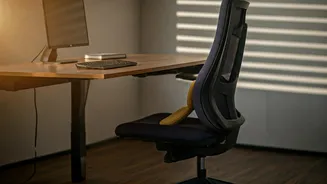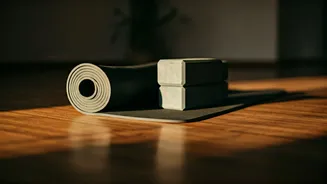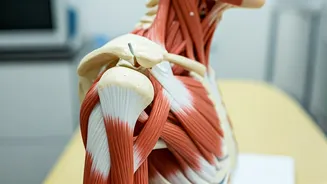Cat-Cow Stretch
The Cat-Cow stretch is a gentle yoga pose that helps mobilize the spine, promoting flexibility and reducing stiffness. To perform this stretch, begin on
your hands and knees, ensuring your wrists are aligned under your shoulders and your knees under your hips. Inhale as you drop your belly towards the floor, arching your back and lifting your head and chest—this is the Cow pose. Exhale as you round your spine towards the ceiling, tucking your chin to your chest—this is the Cat pose. Continue flowing between these two poses for several breaths, focusing on the movement of your spine. This stretch not only targets the lower back but also benefits the entire spine, improving posture and releasing tension. Regular practice can enhance spinal health and contribute to better overall mobility, making it a valuable addition to any routine aimed at alleviating lower back discomfort. Remember to breathe deeply, coordinating your movements with your breath for maximum effect.
Pelvic Tilt
The pelvic tilt is a foundational exercise designed to strengthen the core muscles and improve spinal alignment, which can significantly reduce lower back pain. To perform this stretch, lie on your back with your knees bent and feet flat on the floor, ensuring your arms are relaxed at your sides. Gently tilt your pelvis backward, pressing your lower back into the floor and engaging your abdominal muscles. Simultaneously, slightly tuck your tailbone towards your heels. Hold this position for a few seconds, then relax. Repeat the movement, focusing on controlled motion and proper form. The pelvic tilt helps to stabilize the pelvis and strengthen the core, thus providing crucial support for the lower back. This exercise is particularly effective for individuals with weak abdominal muscles or poor posture, as it helps to re-establish the correct spinal curves. Consistent practice of the pelvic tilt contributes to better spinal health and enhanced body awareness, leading to reduced discomfort and improved movement patterns.
Supported Bridge
The Supported Bridge is a modified version of the bridge pose, offering a gentler approach to strengthening the back muscles and improving spinal flexibility, which can help in reducing lower back pain. To execute this stretch, lie on your back with your knees bent and your feet flat on the floor, ensuring your arms are relaxed at your sides. Place a block or a thick pillow under your hips for support. Gently lift your hips towards the ceiling, creating a straight line from your knees to your shoulders. Hold this position for several breaths, focusing on engaging your glutes and core muscles while maintaining a relaxed posture. The added support from the block reduces the strain on the lower back, making it accessible for individuals with back pain or limited mobility. This pose strengthens the back muscles and improves spinal alignment. Regular practice of the supported bridge contributes to better posture, improved core strength, and reduced lower back discomfort, leading to enhanced overall well-being and mobility.
Knee-to-Chest Stretch
The Knee-to-Chest stretch is a simple yet effective exercise for relieving lower back pain by gently stretching the muscles in the lower back and hips. To perform this stretch, lie on your back with your legs extended. Bend one knee and draw it towards your chest, clasping your hands around your shin or just below your knee. Gently pull your knee towards your chest, feeling the stretch in your lower back. Hold the stretch for about 20-30 seconds, then release and repeat on the other side. You can also do this stretch with both knees at the same time for a deeper stretch. This exercise helps to decompress the spine and alleviate pressure on the lower back, reducing pain and improving flexibility. The knee-to-chest stretch can be particularly beneficial for people who spend long hours sitting, as it counteracts the compression of the spine. Consistent use of this stretch aids in loosening tight muscles, improving circulation, and promoting overall back health, resulting in reduced discomfort and improved mobility.
Seated Hamstring Stretch
The Seated Hamstring Stretch is an excellent way to address lower back pain stemming from tight hamstrings, as it targets the muscles that often contribute to lower back discomfort. To begin, sit on the floor with your legs extended straight in front of you. Keep your back straight, and gently reach towards your toes, feeling the stretch along the back of your legs. If you can’t reach your toes, reach as far as comfortable. Hold this position for about 20-30 seconds, maintaining a straight back and avoiding rounding your spine. Tight hamstrings can pull on the pelvis, which then puts stress on the lower back, causing pain. By stretching the hamstrings, you release tension, which helps to alleviate the pressure on the lower back. This stretch improves flexibility and can contribute to better posture. Regularly incorporating the seated hamstring stretch into your routine will lessen back pain and improve movement.
Trunk Rotation
Trunk (spinal) rotation is a beneficial stretch that enhances spinal mobility and alleviates lower back pain by gently twisting the spine and stretching the surrounding muscles. Lie on your back with your knees bent and feet flat on the floor. Extend your arms out to the sides at shoulder level. Gently let your knees fall to one side, keeping your shoulders flat on the floor. Hold the position for several breaths, feeling the stretch in your lower back and obliques. Then, return your knees to the center and repeat on the other side. This stretch improves spinal flexibility and relieves tension in the lower back. The gentle twisting movement helps to mobilize the spine and release any stiffness. Trunk rotation is effective for improving overall spinal health and alleviating lower back discomfort, which leads to improved posture and movement.
Flexion-Rotation Stretch
The Flexion-Rotation stretch combines spinal flexion and rotation to effectively address lower back pain. To perform this stretch, start by sitting on the floor with your legs crossed, ensuring your spine is straight. Gently bend forward, trying to touch your toes, while simultaneously twisting your upper body towards one side. Hold the stretch for a few seconds, feeling the stretch in your lower back and sides. Return to the starting position and repeat on the other side. This stretch helps to release tension in the lower back and surrounding muscles, improves spinal mobility, and alleviates pain. This movement aids in loosening tight muscles, enhancing spinal flexibility, and promoting overall back health, contributing to improved posture and comfort. Regular practice of the flexion-rotation stretch can make a significant difference in reducing discomfort and boosting movement patterns.
Child's Pose
Child's Pose is a resting and restorative stretch perfect for releasing tension in the lower back and promoting relaxation. To do this, kneel on the floor with your knees wide apart and your toes touching. Sit back on your heels and then gently bend forward, resting your torso on your thighs and your forehead on the floor. Extend your arms forward, keeping them relaxed, or let them rest alongside your body. Focus on your breath, allowing your body to sink into the pose. This pose gently stretches the muscles in the lower back, hips, and thighs, which is effective for relieving pain. Child’s Pose calms the nervous system and is a great way to reduce stress, further easing the discomfort in the lower back. This stretch enhances flexibility and promotes a sense of well-being, providing relief from lower back pain.


